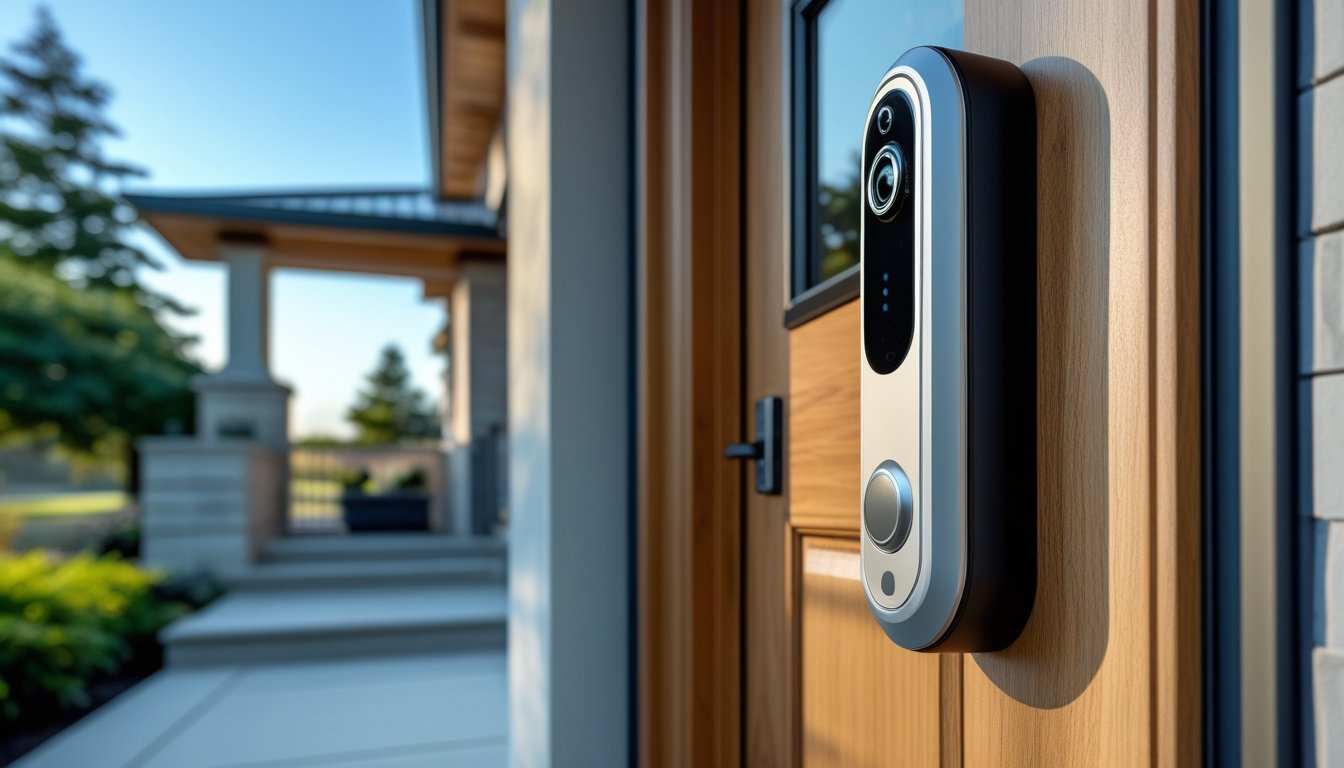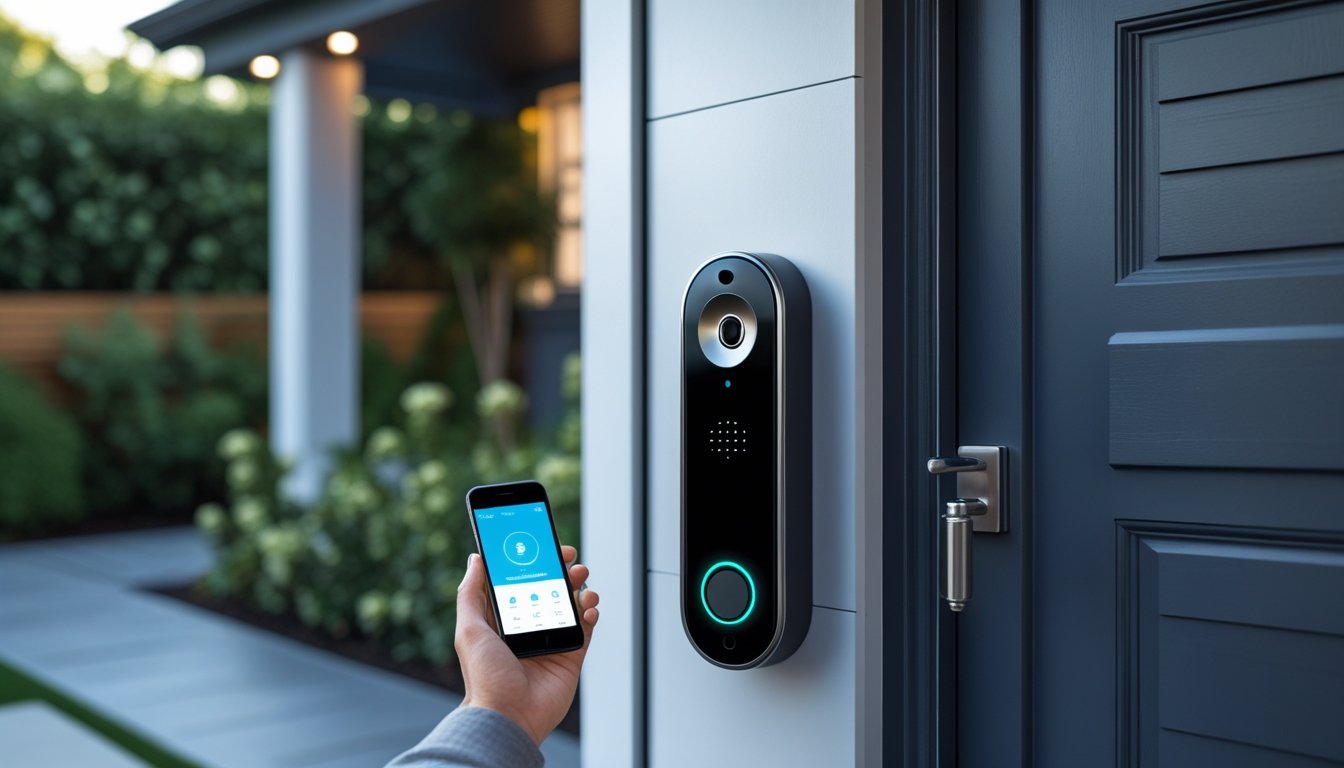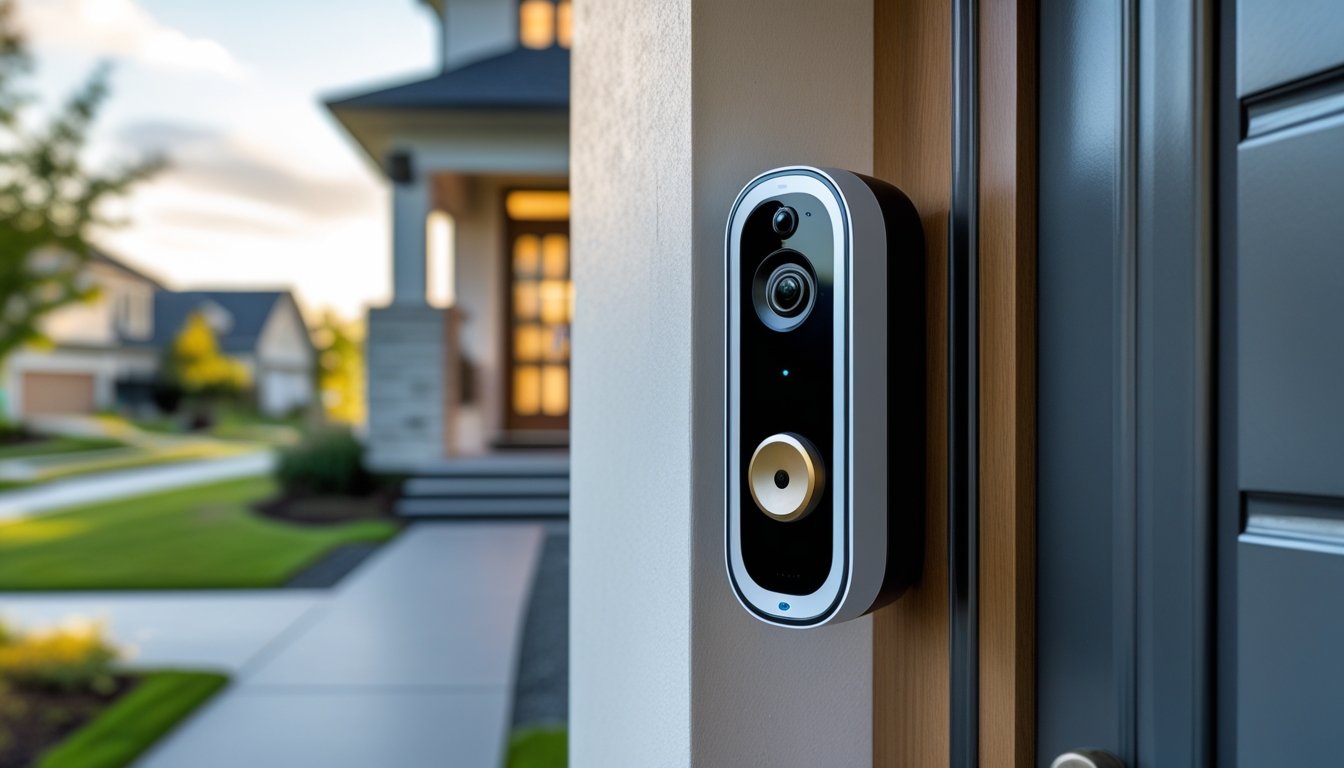Late updated: 19 Jun 2025 13:06
Written by: Elena Prescott
Enhancing Security With Smart Doorbell Innovations: A New Era of Home Protection
Smart doorbells are revolutionising the way we approach home security. With the rapid evolution of technology, these devices have come a long way from simple chimes to sophisticated systems offering real-time surveillance and advanced features. Smart doorbells enhance security by providing homeowners with an eye on their doorstep anytime, no matter where they are. These doorbells not only alert us to visitors but also deter potential intruders, ensuring peace of mind.

We are witnessing a significant shift towards integrating smart security systems within our homes. With their ability to stream live video, send instant notifications, and offer seamless compatibility with other smart home technologies, smart doorbells present a comprehensive security solution. As leaders in smart home innovations, it's vital to address the privacy concerns that sometimes arise, encouraging us to keep our devices secure and user settings well-managed.
Moving forward, the future of smart doorbells lies in their adaptability and the promise of even greater integration with smart home ecosystems. This adaptability ensures that we're not just protecting our homes today, but future-proofing them for tomorrow. By tapping into these innovations, we can enhance not only our home's security but also our sense of safety.
Key Takeaways
- Smart doorbells enhance home security by offering real-time surveillance.
- Seamless integration with smart home systems future-proofs security measures.
- Addressing privacy and user settings is crucial for optimal smart doorbell use.
Innovative Smart Doorbell Features for Enhanced Home Security
Smart doorbells have revolutionised home security with a host of advanced features. These devices offer exceptional video quality, sophisticated motion algorithms, interactive communication, and even AI-driven recognition technologies.
High-Definition Video Quality and Night Vision
Smart doorbells equipped with high-definition cameras provide crystal-clear video, essential for effective home monitoring. Many models now offer resolutions up to 4K along with improved night vision. By harnessing infrared technology and enhanced pixel resolution, these devices allow us to see clear images even in low-light conditions. This capability ensures every detail, from faces to potential intruders, can be discerned accurately.
Advanced Motion Detection and Customisable Zones
Motion detection has become a cornerstone of smart doorbell functionality. With advanced sensors, these devices can detect movement with impressive accuracy. Customisable motion zones add another layer of security. By defining specific areas for triggering alerts, we can minimise false alarms. This innovation is particularly useful for distinguishing between harmless activity and potential threats, ensuring that alerts are both timely and relevant.
Two-Way Communication and Real-Time Alerts
Smart doorbells now feature two-way communication systems, allowing us to speak directly with visitors through our devices. Whether from inside the house or via remote access through our smartphones, we can communicate seamlessly. Real-time alerts keep us informed, sending notifications immediately when someone approaches or a package is delivered. This instant communication bridge offers both convenience and enhanced security.
Artificial Intelligence and Facial Recognition Capabilities
The incorporation of artificial intelligence in smart doorbells has elevated their functionality significantly. AI enables features like facial recognition, which can be used to identify trusted family members or friends. It can also recognise suspicious activity, providing alerts for unknown faces. While facial recognition raises some privacy concerns, its potential for enhancing security is undeniable. These systems can prevent package theft and unwanted visitors, making our homes more secure.
Seamless Integration and Future-Proofing Your Smart Home

Integrating smart technology into our homes involves more than just connecting devices. We must consider seamless integration with current systems, ensure future compatibility, and address privacy concerns. These factors are essential in creating a cohesive and secure smart home environment.
Integration with Smart Home Devices and Voice Assistants
Connecting smart doorbells with a variety of smart home devices and voice assistants enhances convenience and functionality. Devices like Amazon Alexa and Ring allow for hands-free interaction and integration with systems such as lighting and door/window sensors. This interconnectedness enables us to control security features using simple voice commands or through smartphone apps, creating an efficient and responsive system.
Interoperability between devices is a critical focus. This ensures that new additions to the smart home ecosystem are compatible with existing platforms. By embracing home automation, we enhance our safety, making our connected home smarter and more adaptable to evolving technologies.
Installation, Customisation, and Accessibility
Simplified installation processes make smart doorbells accessible even for those less technically inclined. Many systems offer DIY installation with comprehensive instructions and user-friendly interfaces. Customisation options give us the ability to tailor settings to meet specific needs, like adjusting motion sensitivity or video monitoring preferences.
Customer support is pivotal in helping users navigate these customisations. Providers often offer online resources and dedicated support teams. By addressing consumer needs efficiently, manufacturers ensure that smart home technology is both accessible and personalised, matching individual preferences without compromising on affordability or ease of use.
Data Storage, Security, and Privacy Concerns
Data management in smart homes is crucial. Considerations between cloud storage and local storage revolve around accessibility, costs, and privacy implications. While cloud storage provides extensive monitoring capabilities, it raises potential privacy concerns due to data accessibility beyond personal control.
Addressing privacy and security involves ensuring robust encryption protocols for data transmission. This safeguards personal information against breaches. Transparency in privacy policies and educating users on security measures contribute to enhanced trust in these technologies, making smart homes secure and reliable environments.
The Future of Home Security: Technological Advancements and Innovations
Looking ahead, home security's future lies in incorporating innovative technologies. Developments in AI-powered assistants offer predictive insights for potential threats and increased automation. This involves sophisticated video monitoring and automated alerts that further streamline security measures.
Advancements in smart home systems are leading to more intuitive integration among devices. Innovations enable us to not only meet current security standards but also to anticipate future needs. As technology continues to evolve, embracing these technological advancements ensures our homes remain secure, convenient, and at the forefront of innovation.
Frequently Asked Questions

Smart doorbells are increasingly becoming an integral part of home security setups. They combine advanced technology with convenient features to boost both safety and user experience.
What measures can increase the security of my smart doorbell?
Securing your smart doorbell involves multiple steps. Start by ensuring your Wi-Fi network is secure, using strong, unique passwords for both the network and the device itself. Regularly updating the device’s firmware is crucial to guard against vulnerabilities.
How do smart doorbells contribute to home safety?
Smart doorbells enhance safety through features like real-time video streaming and motion detection. They allow us to see, speak to, and monitor visitors remotely, adding a layer of security even when we are not home. This can prevent unauthorised access and provide peace of mind.
In what ways might a smart doorbell be vulnerable to cyber threats?
Cyber threats to smart doorbells include hacking and unauthorised access. Without proper security measures, these devices can become a target, allowing hackers to gain access to network data or live streams. Regular updates and secure login credentials can mitigate such risks significantly.
Can the presence of a smart doorbell act as a deterrent to potential intruders?
The visible presence of a smart doorbell can indeed deter intruders. Knowing they are being monitored may discourage potential burglars from attempting a break-in. This psychological effect plays a part in reducing crime rates in areas where smart doorbells are prevalent.
What best practices should be followed when installing a smart doorbell?
When installing a smart doorbell, place it at an optimal height and angle to maximise coverage of the entrance. Ensure it’s in a location with good Wi-Fi strength. Follow manufacturer guidelines for installation to prevent any functional issues and maintain the device’s longevity.
How frequently should I update my smart doorbell's software to maintain security?
Regular software updates are pivotal for maintaining security. We should aim to check for updates at least once a month or enable automatic updates if available. Keeping the software up-to-date ensures we have the latest security patches and feature enhancements.
